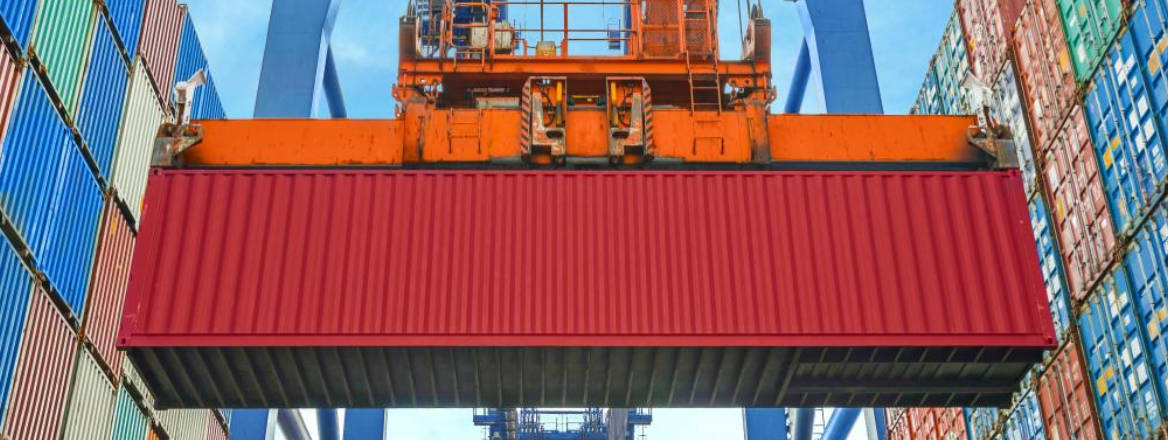Have Your Cake and Trade It: Is it Possible to Promote Legitimate Commerce While Reducing Illicit Trade?
Despite the formidable challenges of combatting illicit trade and trade-based money laundering, several ongoing initiatives give cause for cautious optimism.
In the first in a series of Commentaries, RUSI researchers take a broad look at efforts to counteract illicit trade and trade-based money laundering. In the next Commentary, guest contributor Jonathan Draper will discuss the challenges of tackling trade-based money laundering.
Just as the ease of international transport and communication has enabled commerce to flourish, so too have criminals seized upon the opportunities offered by frictionless trade. Criminal exploitation of the global trade system comes in two basic forms. One of these is trade in illicit or untaxed goods, and the other is the use of legitimate trade to move or conceal criminal proceeds, known as ‘trade-based money laundering’ (TBML).
Both forms of criminality take advantage of the sheer scale of global trade. In 2017, the World Trade Organization estimated the value of merchandise exports to be $17.73 trillion. And even in this age of advanced technology, most shipping containers remain akin to a Kinder Surprise chocolate egg: beyond a bill of lading and self-declared information, no one knows quite what is inside. Less than 2% of all shipping containers are screened each year; this is a gigantic proverbial haystack in which to hide criminal activities.
Doing more is possible, albeit costly and difficult. For instance, as early as 2012, the US Congress passed legislation requiring all incoming shipping containers to be screened abroad, in their ports of departure, but the requirement has not been implemented due to its costs. One might be tempted to conclude that trade-related crime is the inseparable ugly brother (or sister) of legitimate commerce, and any meaningful reduction in its scale will come at the expense of legitimate business. So, how can one resolve this particular manifestation of the ‘security versus prosperity’ dilemma?
In truth, there is no answer, yet. But there are several initiatives that give cause for cautious optimism, and it is important that policymakers promote rather than neglect them.
The first of these is evidence of ongoing efforts to develop a better understanding of patterns of illicit trade and TBML. As early as 2004, US Immigration and Customs Enforcement established the world’s first Trade Transparency Unit. At its core is combining trade statistics from both the US and bilateral trading partners, typically based on customs information-sharing agreements, to identify anomalies that may be suggestive of criminality (for example, one country claiming to have exported more to the US than is reflected in US import statistics, which can indicate trade mispricing).
A similar approach has been adopted by Global Financial Integrity, a non-governmental organisation whose analysts crunch trade statistics to uncover potentially suspicious discrepancies. Yet its outputs have attracted not only well-deserved admiration but also some scepticism, on the grounds that there can also be other, legitimate reasons for the asymmetries it identifies. For instance, if goods are trans-shipped through several countries in transit, the country of origin may be unintentionally misidentified.
In short, it is not yet possible to accurately measure or fully understand the scale and true impact of illicit trade and TBML. Just over a dozen countries have established domestic trade transparency units, and there have been calls for more governments to come onboard and create a global network like the existing Egmont Group of financial intelligence units. For the argument in favour of more trade transparency units to gain greater force, a more concerted effort to assess their merits and, including their achievements to date, would be helpful – an area where, given the paucity of current material, analysts have their work cut out for them!
Another frontier in the fight against criminal abuse of the global trade system is engagement with the private sector. Financial institutions and designated non-financial businesses and professions have long been obliged to conduct customer due diligence and report suspicious activities. In recent years, regulators in the UK, Hong Kong and Singapore have exhorted banks to thoroughly scrutinise the trade they finance. Yet, with an estimated 80% of global trade conducted without bank financing – in other words, on open account terms – a bank’s role is likely to be limited to processing trade-related payments without deep insight into the activity giving rise to the payment.
In contrast, shipping lines, freight forwarders, customs brokers and port or warehouse administrators are in more immediate contact with the goods being traded. But, unlike banks and insurance companies, they are not typically obliged to identify or report suspicious activity. At present, at least one voluntary industry initiative is aiming to address this gap. In November 2016, several major shipping companies and the International Federation of Freight Forwarders Associations committed to, among other things, ‘appropriate due diligence measures, such as Know Your Customer processes’ and ‘specific vigilance measures and common early warning indicators in order to identify high-risk shipments of counterfeits’. This was soon followed by the publication of voluntary know-your-customer best practices.
Whether this is a game-changer remains to be seen. It is far from cynical to suspect that businesses’ determination to do the right thing could be strengthened by binding regulation, yet no government wants to entrap its industry in red tape. Besides, the nature of TBML is such that an exceedingly broad spectrum of businesses could be susceptible to criminal abuse.
For instance, in 2014, the US Financial Crimes Enforcement Network issued a ‘geographic targeting order’ requiring 10 categories of businesses in the Los Angeles Fashion District to report all cash transactions in excess of $3,000. Among them were garments stores, flower stores, and all businesses bearing the words ‘import’ or ‘export’ in their name. The reason for this was the alleged involvement of many businesses in the area in the Black Market Peso Exchange, a TBML scheme pioneered by Colombian drug cartels.
As this example shows, identifying businesses at risk of wittingly or unwittingly facilitating TBML is not straightforward. That said, intensified dialogue with key trade enablers such as shipping lines is a sensible first step.
Finally, there is an ever-greater international focus on free trade zones (FTZs), where governments relax customs duties and controls to attract trade and investment. FTZs also frequently offer other incentives, such as company incorporation on an expedited timeline or easier access to immigration if renting a significant facility inside an FTZ.
Due to these features, FTZs are exhibit A for those who worry that governments are all too willing to forego their responsibility to counter illicit trade in pursuit of business opportunities. Indeed, one of the authors has expressed the concern that this is what awaits the UK if its current plan to create 10 freeports after Brexit materialises.
But with the OECD’s draft Guidance to Counter Illicit Trade emphasising the risks posed by FTZs, their transparency and earnestness in tackling crime are once again subject to international scrutiny. In some of the key locations, domestic action is taking place too. For instance, the administration of the Colon Free Zone in Panama, which is often flagged as a high risk zone for TBML schemes, adopted a resolution that requires electronic filing of trade-related information in April 2019, a measure that is key to achieving greater transparency in the zone.
Of course, none of the initiatives discussed will make illicit trade or TBML go away anytime soon. Nor do they change the fact that, all too often, crime prevention plays second fiddle to the promotion of trade for all involved, including governments. But they do show that it is not only criminals who innovate in this field and, as will be evident from the following contributions in this four-part commentary series, there is much thinking on fighting TBML and abuse of FTZs. Promoting this creative attitude is key: after all, it need not be inevitable that more trade equals more illicit trade.
The authors are currently working on a two-year project researching illicit-trade and money-laundering risks in free trade zones. More information is available here: https://bit.ly/2MKRlSa.
The views expressed in this Commentary are the authors’, and do not represent those of RUSI or any other institution.
WRITTEN BY
Anton Moiseienko
RUS Associate Fellow, CFS
Alexandria Reid
RUSI Associate Fellow, OCP | SHOC Network Member - Researcher
Isabella Chase
RUSI Associate Fellow, CFS




